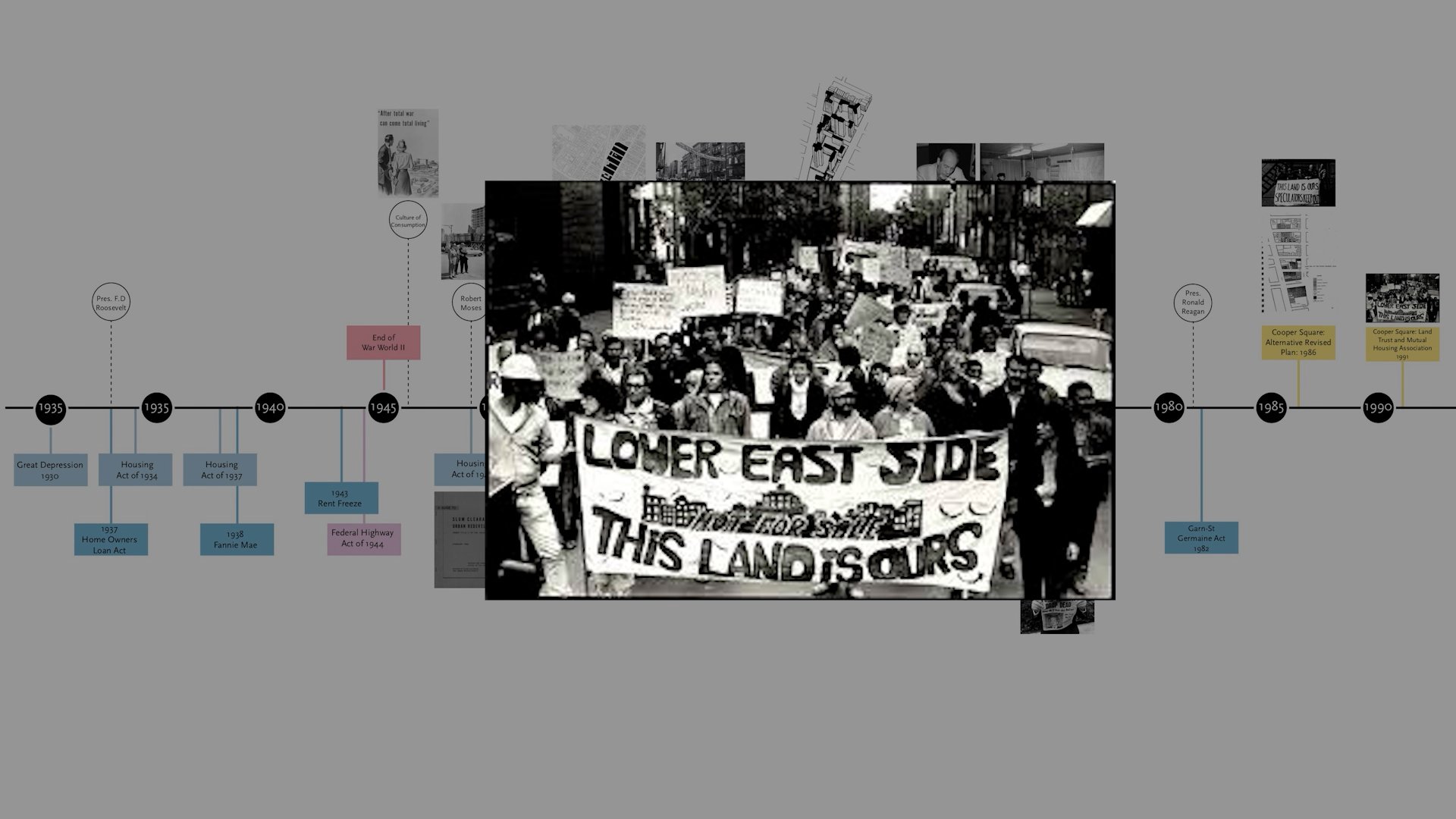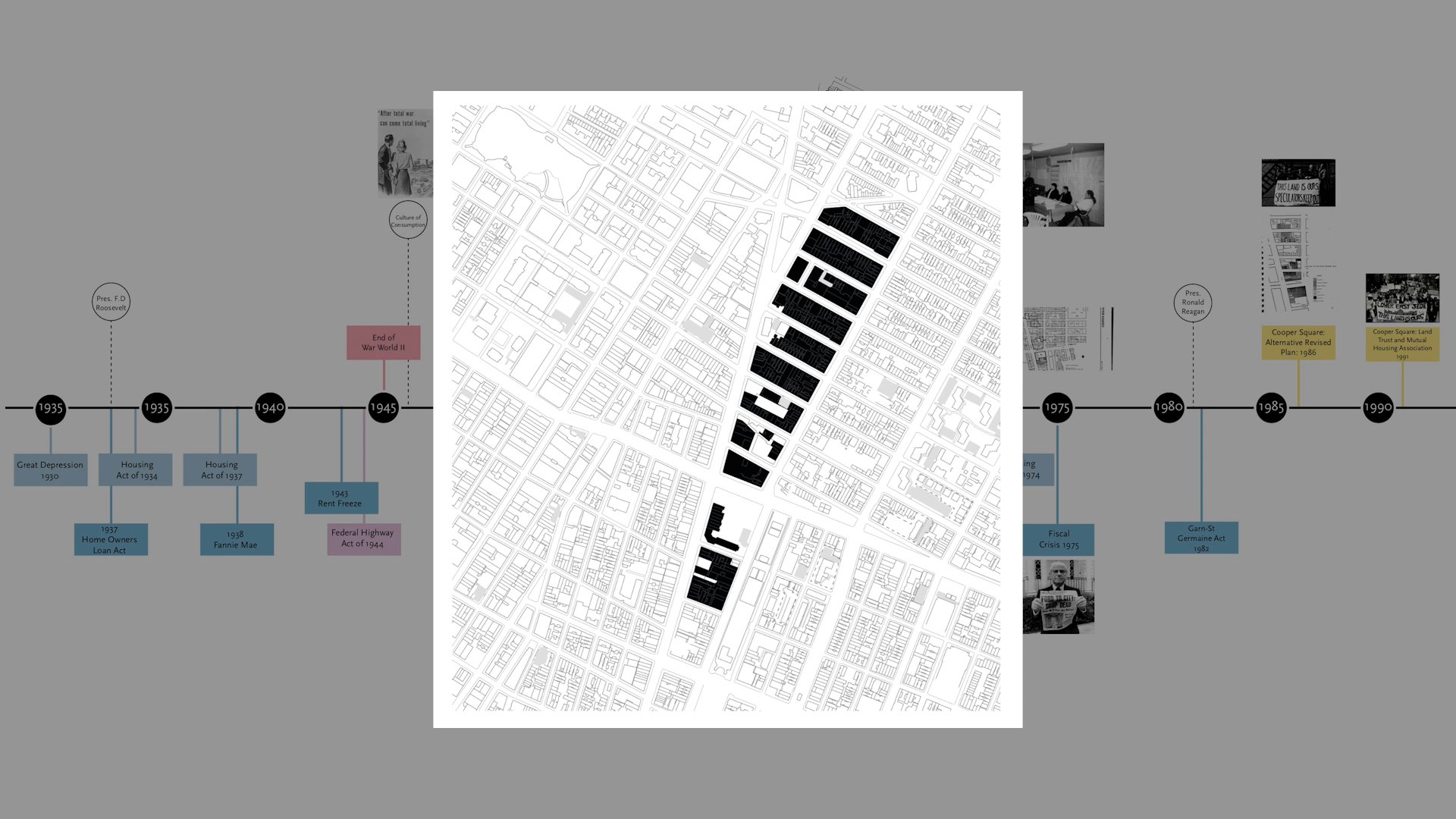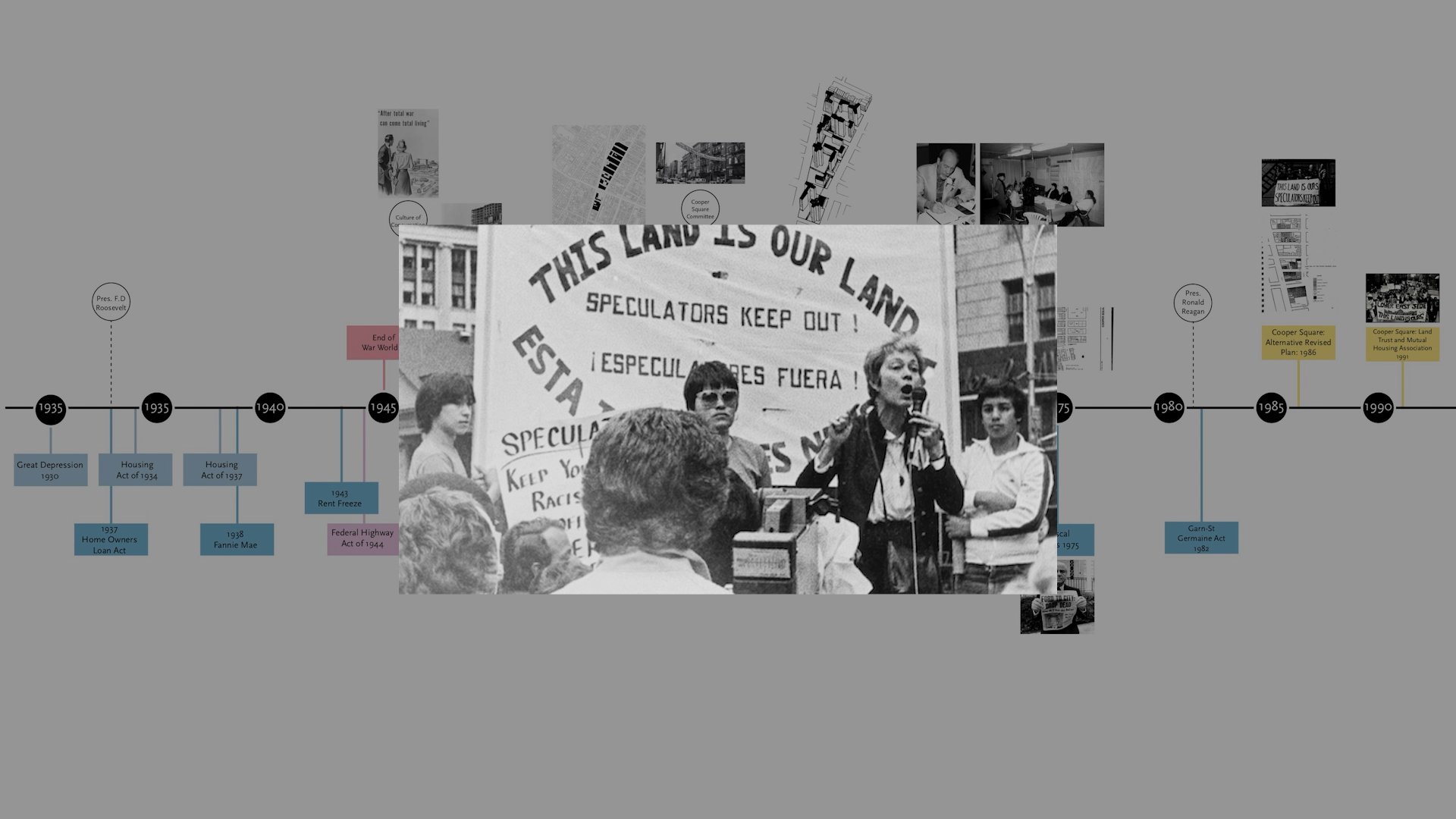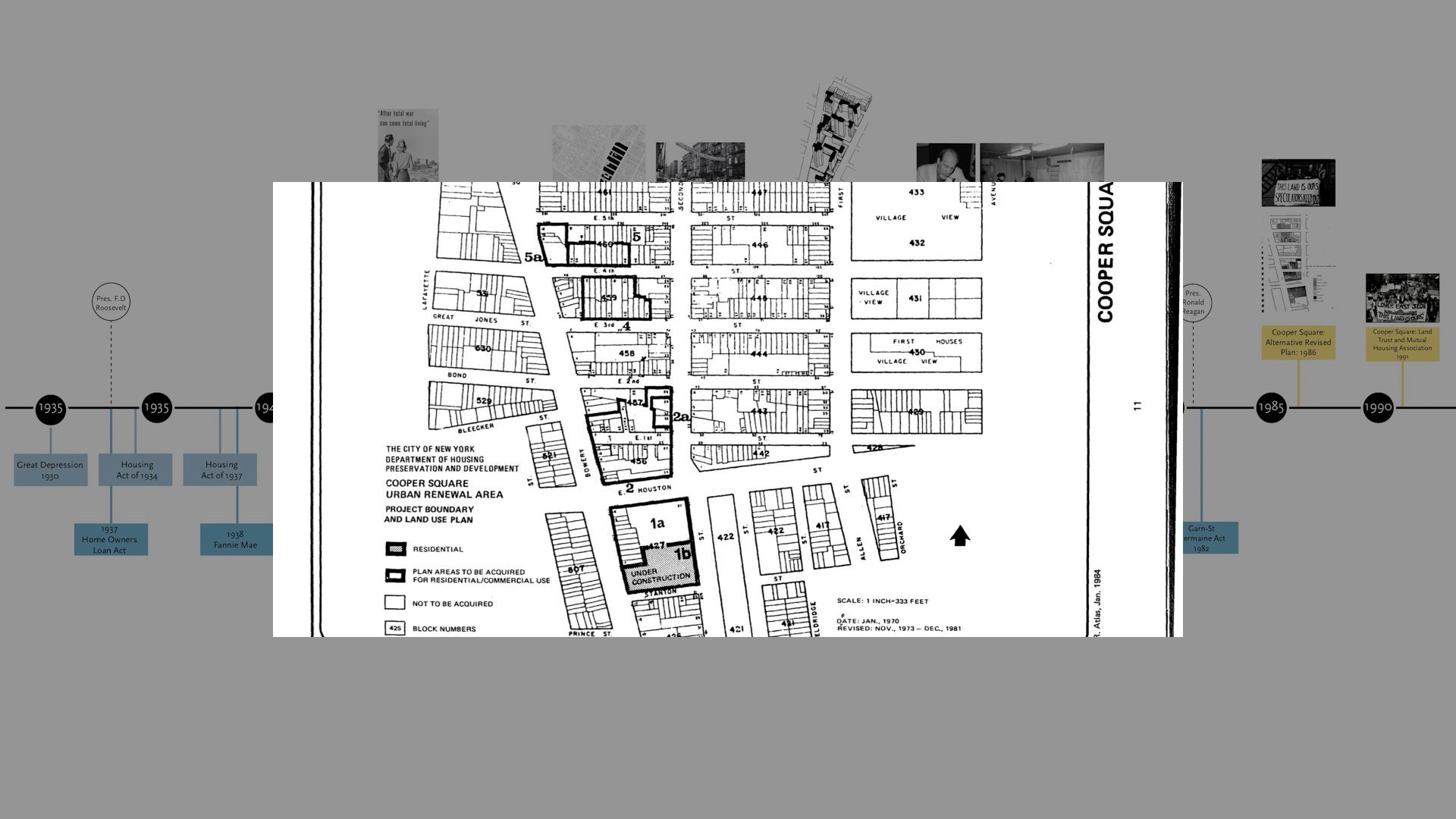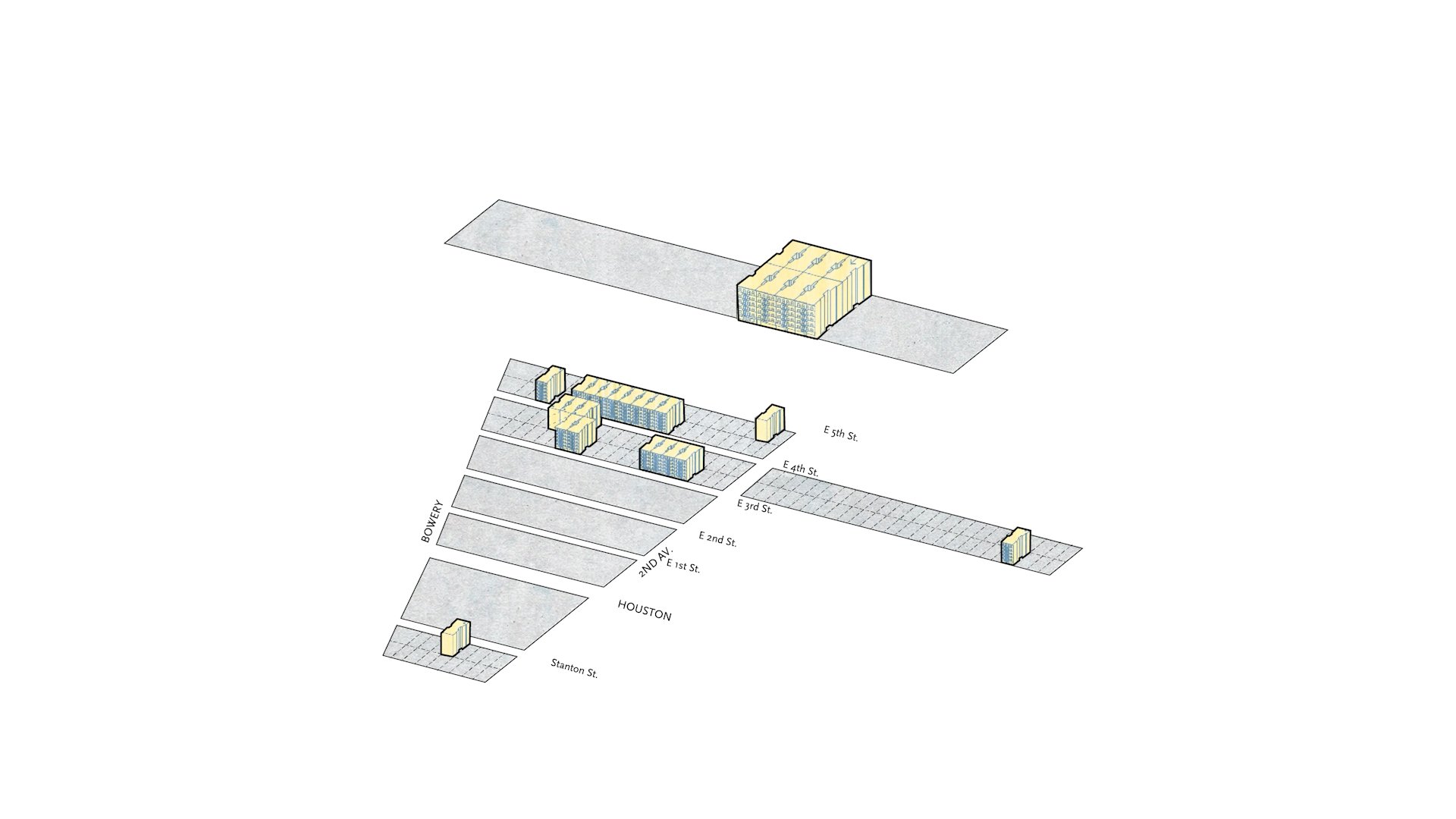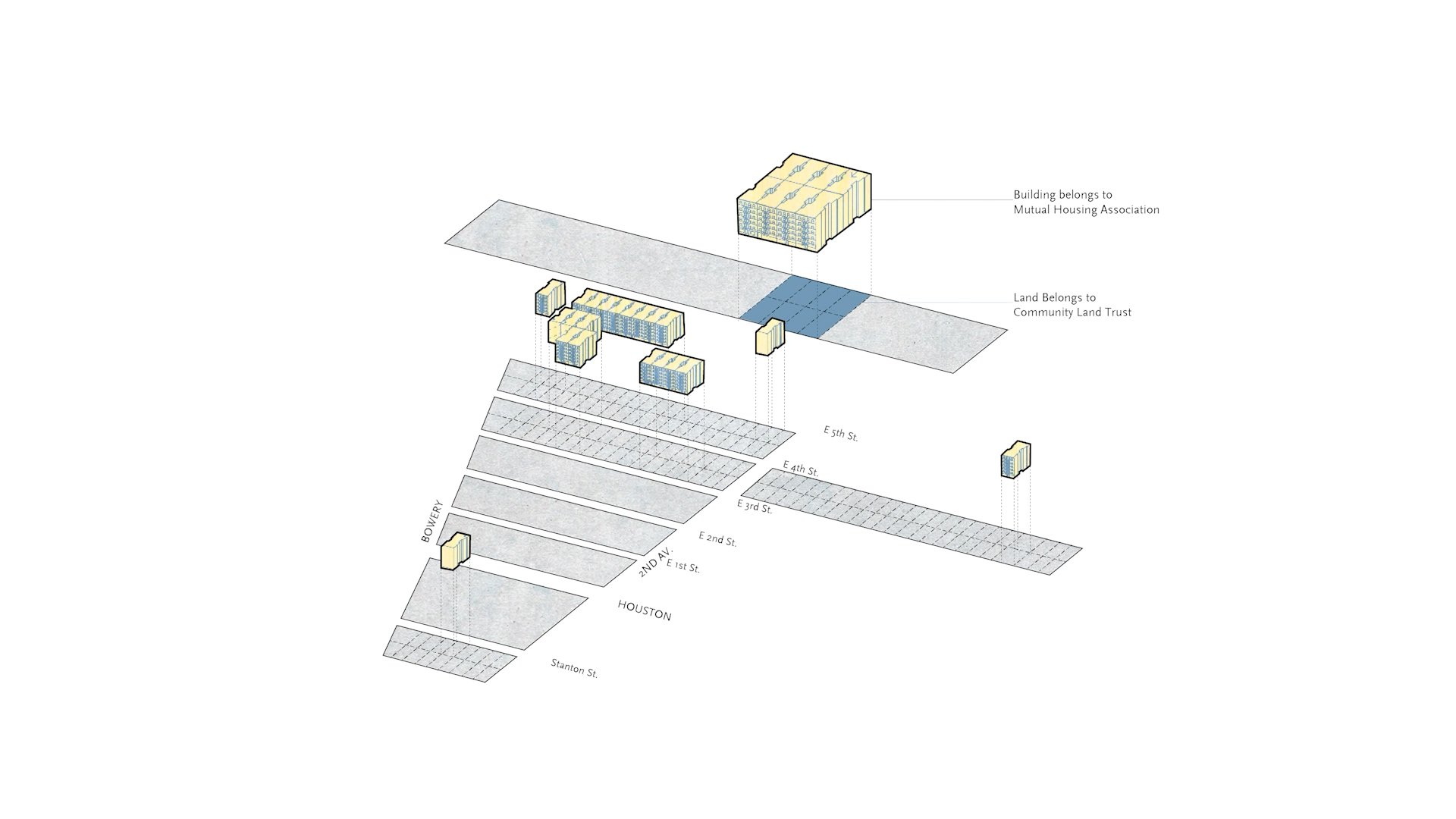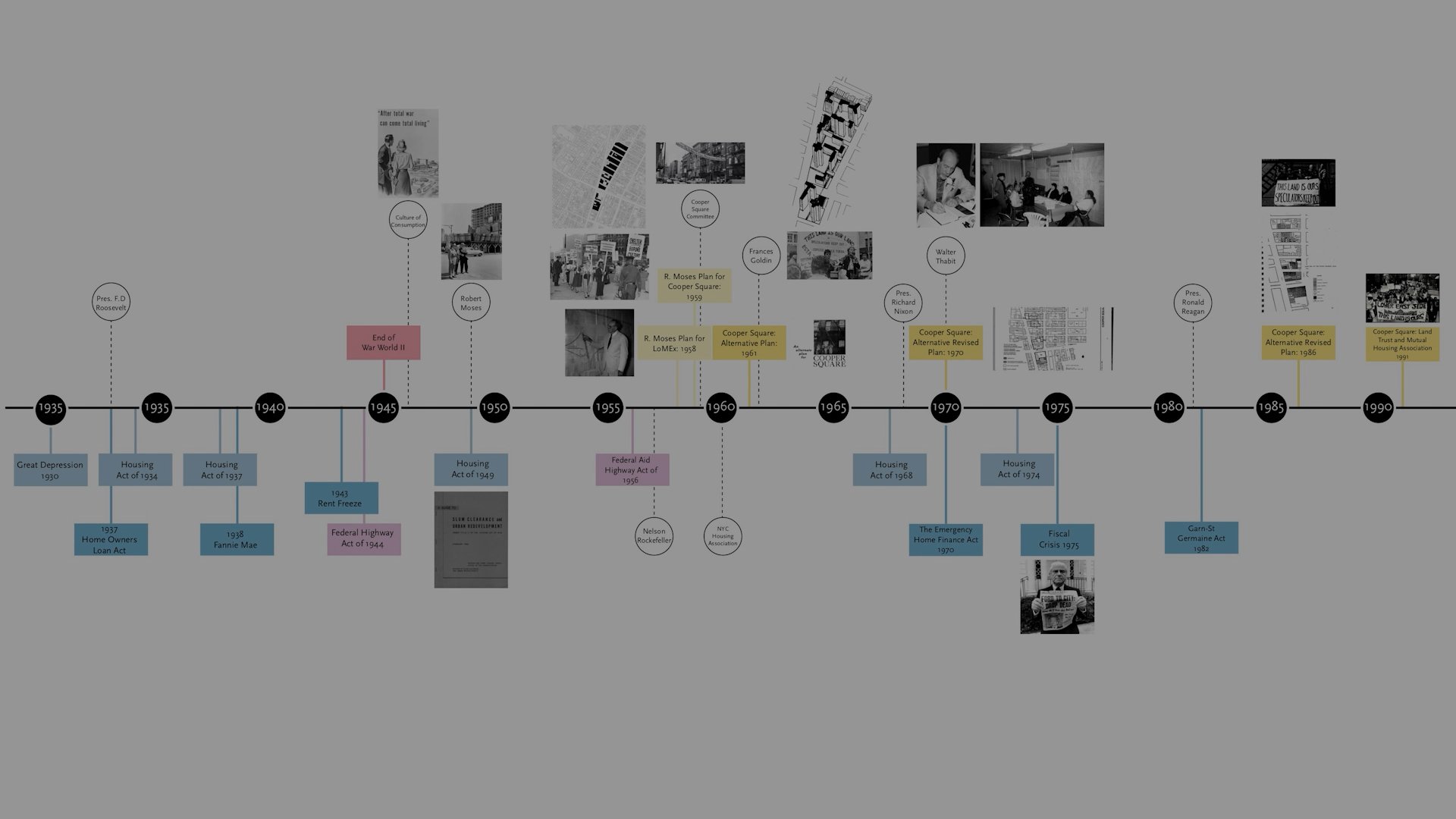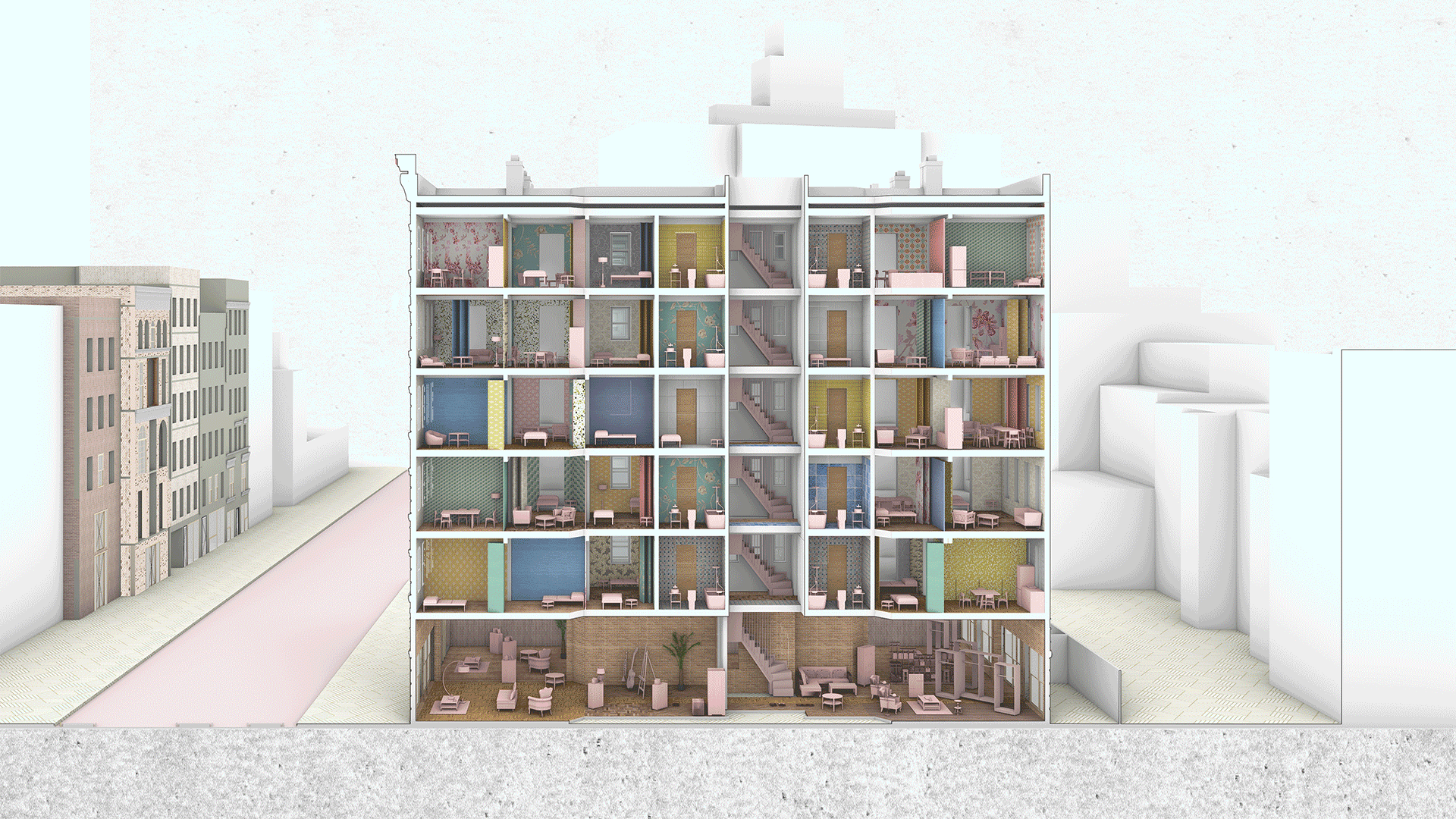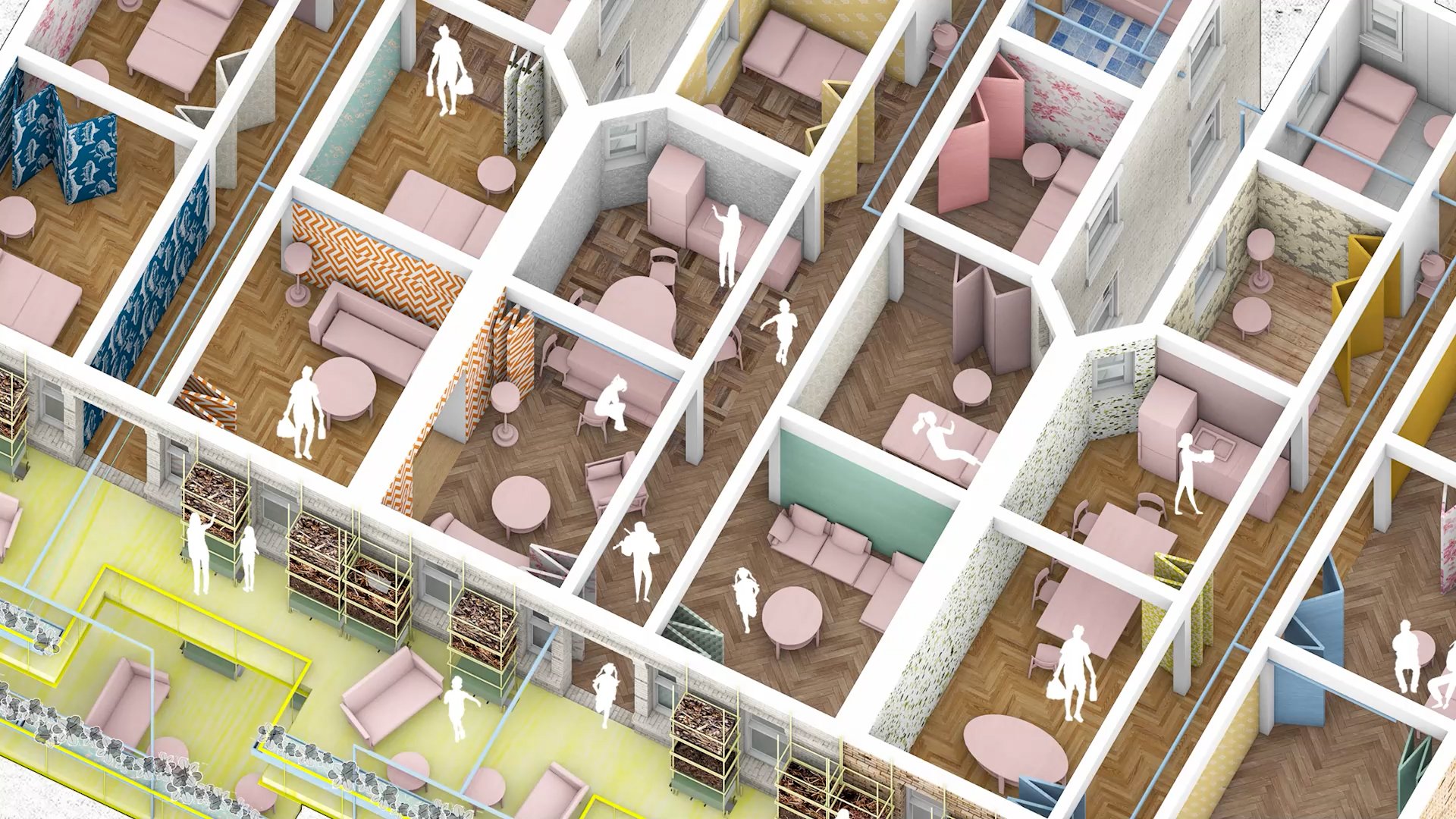Life Support Ecosystem
Life Support Ecosystem
Life supports Ecosystem, looks at the politics of land ownership, and provokes a movement that imagines the architecture of collective ownership and sharing among humans and non-humans.
Life Support Ecosystem is an Architecture and urban movement tested in the Lower East Side of Manhattan, in Cooper Square. Initially, the transition to collective ownership through a Land Trust System in Cooper Square took place in the 1990’s, following a series of events that threatened its inhabitants with slum clearance and displacement. The movement is driven by the idea that a society that functions under the basis of collective ownership requires its own spatial, material, and relational arrangements. Reflecting on the work of feminist writer Silvia Federici, the idea of “The Commons” has been adopted within the Life Support Ecosystem on the basis of cooperation and sharing among humans and non-humans. Five main spatial transformations has been tested in Cooper Square to nurture the soil, grow food, collect and threat the water, compost and establish various degrees of sharing.
Growth in New York is presumed to be good to fuel global and local capital. However, the idea of constant growth in architecture assumes a simplified notion of site, as empty, without people or politics. The notion of an empty site is challenged in Cooper Square, in which soil is nurtured and harvested.
The life support ecosystem caters to those who have been excluded from real estate hegemony in Manhattan or unwilling to participate in it, on the basis of cooperation and sharing among humans and non-humans. Food, water shelter, clothes, technology, knowledge and culture is shared within this common. This ecosystem attempts to gain a certain level of independence from the city’s infrastructures.
Though we may think of “owning” one’s own home, the reality is more often that of owning a mortgage. The mortgage, more than an instrument to take on debt, is a means through which the home becomes embedded in global flows of financial capital. However, the notion of fixed ownership does not take into account the evolution of relationships between people, and their changing financial, personal and bodily conditions. A society that functions under the bases of collective ownership requires its own spatial, material, and relational arrangements. One that focuses on Architecture as a life support ecosystem.
Crit: Andrés Jaque, Columbia University, GSAPP
Project Collaborators: Pabla Amigo & Magdalena Valdevenito

